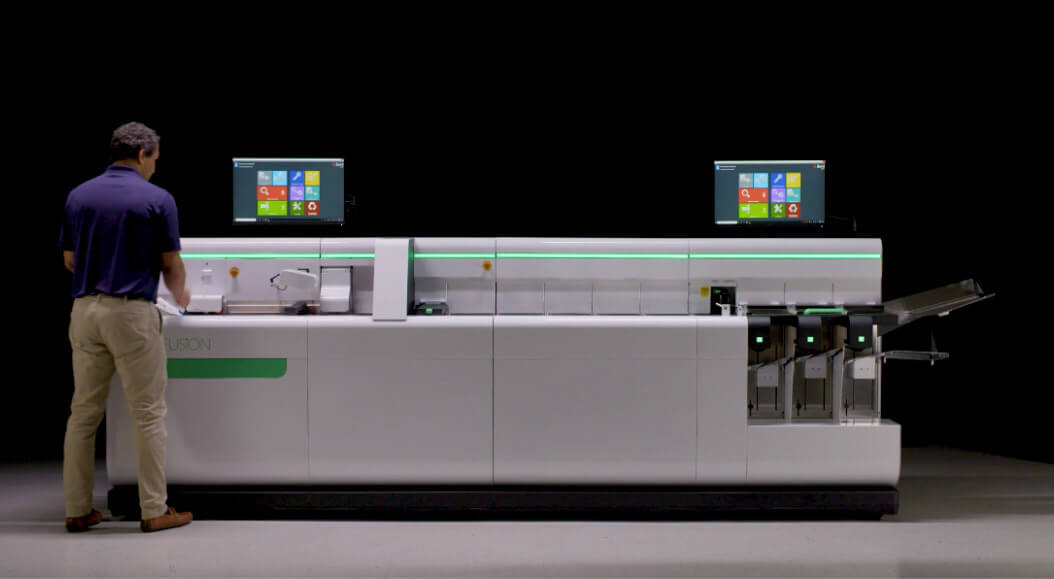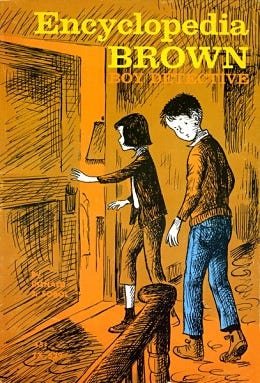The Dusty Truth That Shattered My Dream of Knowing It All
I once thought I could know it all. A conversation with Kodak's scanner team at a trade show showed me how wrong I was.
Dust doesn’t usually spur epiphanies
Sneezes, sure. A squirt of Pledge and a swipe over your furniture, yes. Insight, not so much.
But paper dust did change my view of complexity – and ruined my dreams of ever being able to “know it all.”
Here’s the story – and why it matters with content marketing.
Bouncing around the Internet the other day, I started thinking about how easy some people make complex things look.
The Google search box itself is a model of simplicity. The underlying technology that culminates in that one simple box is breathtakingly complex.
Or take an online form for making an insurance claim. On the surface, it’s simple for the user (or should be): fill in the form, add details and a photo, submit it to your insurance company. Behind the scenes, there’s an entire industry that created the technology that connects that form data to the workflows and other underlying technology that make that process appear simple.
Once you begin to scratch the surface of, well, anything, you quickly realize how complex and complicated it gets no matter how easy it looks on the service.

Scanning and Paper Dust
Enter Eastman Kodak and the AIIM Show and Conference; 2002-ish.
One of my jobs as editor of AIIM’s magazine was to meet with vendors at the annual event and try to figure out what the hell was important in the industry. These conversations led to article ideas, guidance for trends to look out for, and the occasional comfy couch to rest on during these conversations (anyone who’s worked a trade show knows how great that is). It was one of my favorite things to do, exhausting, but usually fun (barring the vendors just giving a generic sales pitch about how wonderful they were. Reflexive former editor note for any IT vendors reading this: no one gives a shit about you, tell us what you do for your customers).
Anyways.
Document imaging (scanning paper documents with a piece of hardware to extract the data and/or capture the entire document for business use) was (and is) an important part of the ECM space. Every year I would talk with a few of the major scanning/imaging guys.
OK, paper dust. It’s coming.
So the document imaging horde for Kodak was filling me in on the latest and greatest in scanning technology and their products. Kodak had a horrible naming convention of a string of numbers and letters for their scanners. (Actually, all of them did except for Visioneer. I remain in awe of Fujitsu’s Scott Francis, who, when last we spoke about 2 years ago, could rattle off pretty much every model going back a decade and more.)
So, attempting to divert the conversation away from a series of numbers and letters I wasn’t going to remember anyway, I pointed to this giant silver thing dangling over one of the huge Kodak scanners and asked, “What’s that?”
“That’s a fan,” was the reply.
My face went into “what the hell” confusion mode and I mumbled out some version of “Whaaaaa?”
This is the epiphany part.
Scanning is a simple process. You take a piece of paper. Place it in the feed area. Push the button. Boom, it feeds through and becomes a digital document, available for distribution and saving wherever you want.
Now, from my seven or so years in the industry at that point, I knew it was more complicated than that. There’s double-feed detection (using ultrasound); deskew (straightening the image); for forms, the need to have recognition points so the scanner knows where to look for the information (less important now that the software is better); different lights to be able to scan different colors – then there’s the software and the pass through to kick off workflows and . . . anyway, it’s complicated. Like most seemingly simple technology, there’s a LOT of effort and innovation in any scanner you see.
That scanner your doctor’s office uses to scan the same insurance card they scanned two weeks before is a marvel of engineering.
So I knew scanning was and is difficult.
What the guy from Kodak said blew my mind though.
“Paper dust.”
“Um, say again?”
“Paper dust.”
What happens when you run a major paper scanning operation – hundreds of pages a minute through a scanner – is that copious amounts of paper dust hits the air. The dust, if not removed, gunks up the scanner’s parts (rubber wheels move paper through the scanning area, too much dirt/debris on the wheels causes “slippage” which results in inaccurate scans) not to mention that all this paper dust could interfere with image quality as it settled onto documents needing to be scanned and in general just get into the working parts of the scanner and gum it up.
“Well, that makes a lot of sense.”
A piece of me died.
In that moment, I gave up on ever being able to understand the intricacies of everything I was covering. Until then, I was laboring under the delusion that with enough time, I would figure it all out. Nope. Paper dust cured me of that illusion (delusion?).
You’ll Never Know It All
For me, this was a crushing realization. My version of heaven, should it exist, explains why: when you get to heaven, you can know anything you want about anything.
Well, that and maybe a touch of the feasting and drinking in Valhalla.
One of the most frustrating aspects of being a marketing professional is knowing how complicated it is and how simple people who aren’t in marketing think it is.
As a former editor, I raise my hand in guilt here. I may have even said in the past that I went to “the dark side” when I started doing focused inbound marketing work in 2011.
Marketing encompasses domains including PPC and SEO (which is also advertising), writing and all the other types of content, emails, campaigns, funnels, persona development, and . . . I could create a list as long as this article. And this doesn’t even include design and layout skills, which many hiring managers think all marketers possess. And marketing isn’t advertising or PR.
I can be considered an expert at content marketing. Most days I feel like I’m only scratching the surface of what I want to know.
Before this section grows into an article of its own, I’ll stop by saying that this matters for this essential reason: be wary of anyone who says they know and understand everything.
Maybe they are a unicorn. Most likely they aren’t.
Find folks who understands where their knowledge becomes blurry and know when to ask for help. For instance, I understand the basics of SEO. You would not want me to manage a pay-per-click campaign that involved any complexity. Can I write the ads and landing pages and email campaigns and assets that a PPC campaign uses? Absolutely.
Manage the overall campaign? No, my brain just doesn’t work that way.

Paper Dust and Content Marketing: Beware of the “It’s Easy” Peddlers
What’s this got to do with anything? Especially content marketing?
Many articles about content marketing essentially say “write/create good stuff.” And that’s true, at the heart of content marketing is writing/creating content that helps and appeals to your audience – a challenge, but easy enough to understand.
However, that’s like companies who would think they could just buy some scanners and document imaging software for a quick resolution of their paper problem and to automate their business processes.
It just ain’t that simple.
What’s good? What’s good for your audience? How do you measure if your “good” is “good” for your customers? What’s a good headline? A good length for your blog/ebook/video? How do you write, uh, good?
Good and excellence and the ability to make excellence look simple is REALLY fucking hard. Pick an episode of Joy of Painting and watch Bob Ross paint – nothing, nothing, nothing, then BOOM, trees, stream, mountains. It’s like watching magic – real magic – happen.
There’s something fantastic about watching excellence in action. As an NFL fan, it’s often easy to think that the perfectly placed pass; the leaping, fingertip catch; the block out of nowhere; a wicked spin move on a blitz are all the result of pure athleticism. And that’s partially true – there are only a few humans in the world capable of doing what they do.
What’s not seen are the years of repetition – of throwing the ball with the same throwing motion; of thousands of catches; of hundreds of times practicing that first step and arm placement for the spin move – that culminate in that moment of “Holy shit! Did you see THAT!”
Everything that looks simple is almost always the result of massive amounts of work, experience, talent, and insight.
So the next time you see a blog post, website, or email marketing campaign and start thinking “it’s just a bunch of words, I can write;” respect that
1) it’s hard and
2) you might be able to, but it won’t be easy or as simple as you think.
Email me at duhonius@gmail.com or call/text me at 301-275-7496. Ask me about my “Newsletter-in-a-Box” offer.
FYI, photos of the Dust Bowl are incredible and worth a quick search and look-see.


